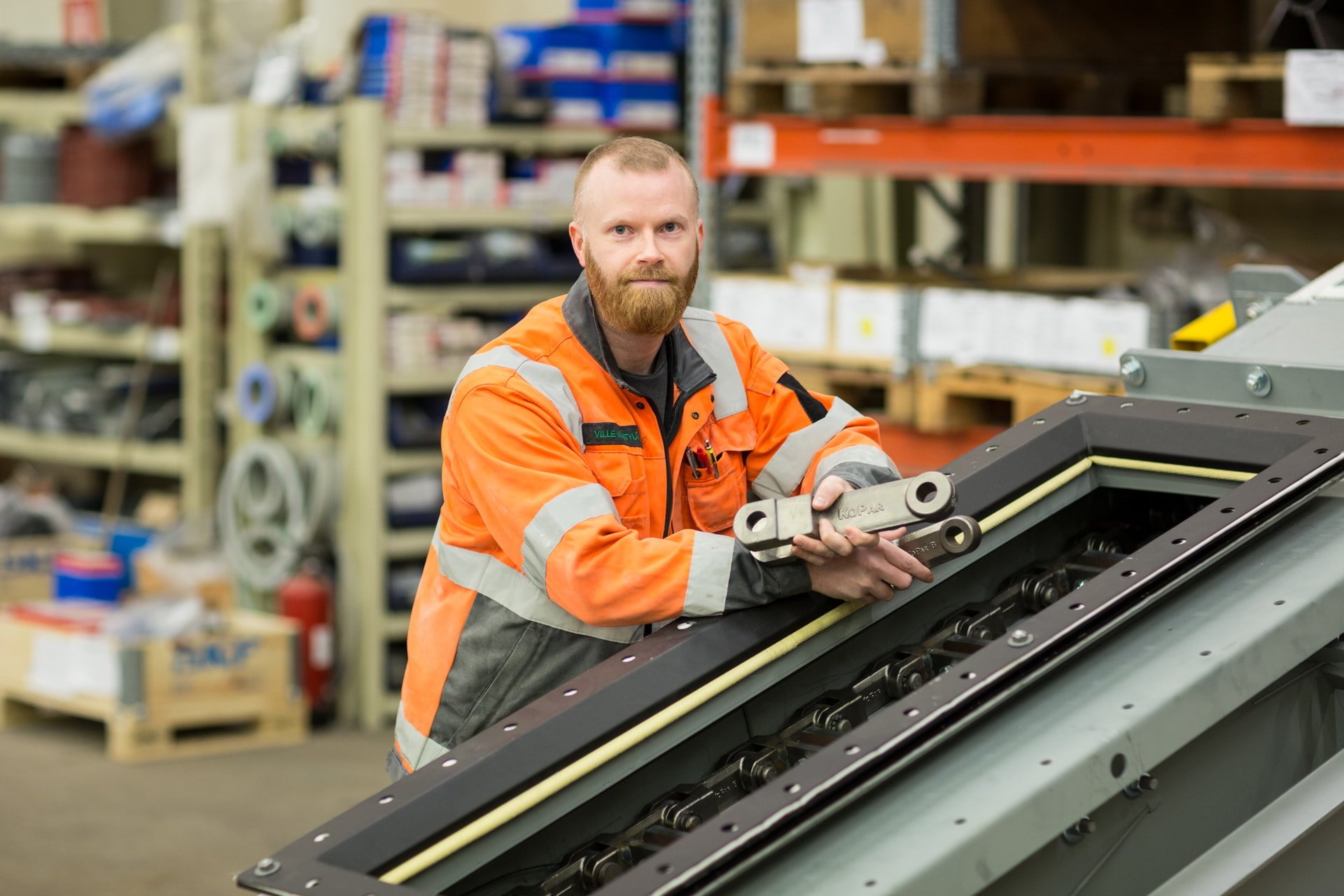An ash conveyor, also known as a drag conveyor, is a device used to transport hot ash. Let's take a closer look at why these devices are used and the advantages they offer.
How does an ash conveyor work?
An ash conveyor operates efficiently in transporting hot ash from one place to another. Its operating principle is based on a closed or partially closed channel where moving drag chains pull the material along. This mechanism enables the continuous and even transfer of large amounts of material.
The drag conveyor consists of a motor that moves a chain or belt to which the drag chains are attached. This structure makes the device highly efficient, as it can transport material both horizontally and vertically. This makes the conveyor suitable for various industrial applications and environments.
Hot ash can be challenging to handle due to its high temperature, but the design of the drag conveyor allows for simultaneous cooling and transportation of the material. This improves the durability of the conveyor and protects it from heat damage.
Where is an ash conveyor used?
Ash conveyors are widely used in various industries where efficient and safe handling of hot ash is needed. They are utilized, for example, in power plants, chemical factories, and metal processing, where the transfer of hot material is a crucial part of the production process.
The applications of drag conveyors are versatile, as they can handle different materials such as sand, grain, and coal, and can transport them in different directions and at varying heights. This makes them valuable in various production environments where material transfer is critical.
Additionally, drag conveyors offer space-saving benefits in vertical applications, as they take up less floor space than many other conveyor systems. This is particularly useful in space-constrained environments.
What is the difference between an ash conveyor and a drag conveyor?
Ash conveyor and drag conveyor are synonyms, meaning they refer to the same device. This synonymy arises because both terms describe the same operating principle and purpose-the transfer of hot ash in industrial processes.
The use of synonyms can sometimes cause confusion, but it is important to understand that both terms describe the same device. This clarifies communication and ensures that all parties understand which device is being discussed.
By using precise and clear terms, we can ensure that the use of ash conveyors and drag conveyors in industry is efficient and understandable for all parties.
What are the advantages of using an ash conveyor?
Using an ash conveyor brings several advantages, such as efficiency, safety, and environmental friendliness. Its ability to continuously and evenly move large amounts of hot ash makes it a highly effective part of industrial processes.
The closed structure of the conveyor reduces the spread of dust and splashes, improving the cleanliness and safety of the work environment. This is especially important in production environments where employee well-being is a priority.
Additionally, ash conveyors are durable and require relatively little maintenance, making them cost-effective in the long run. They also offer flexibility and versatility in handling different materials, increasing their applicability in industry.
Summary
Ash conveyors are an essential part of many industrial processes where the transfer of hot ash is important. They offer an efficient, safe, and environmentally friendly solution for material handling, and their use brings several advantages in the industrial sector.
We have decades of experience in designing and manufacturing ash conveyors, and we can help companies choose the right solution for their needs. We are constantly striving to develop and optimize our conveying equipment to support the industry's green transition and sustainable development.
Ultimately, the selection and proper use of an ash conveyor can significantly improve production efficiency and reduce environmental impacts, which is important for building a more sustainable future.

You have a challenge that needs solving?
Let us help! Contact us for more information about our products and services.
